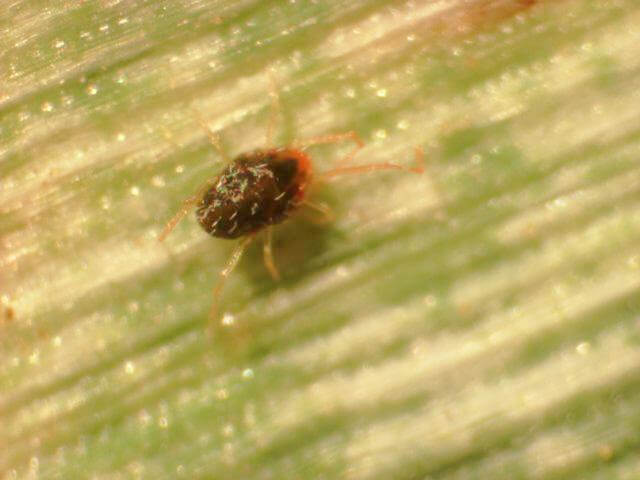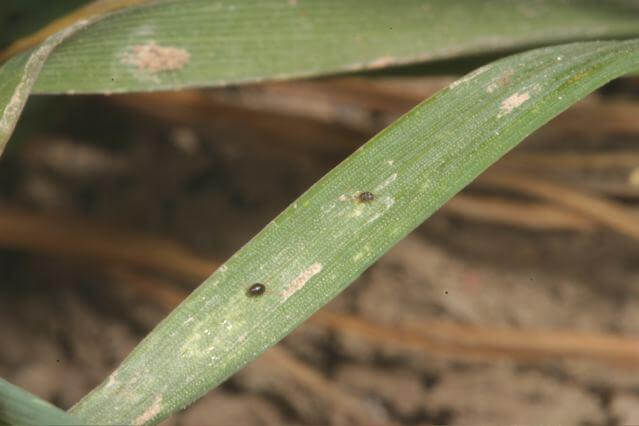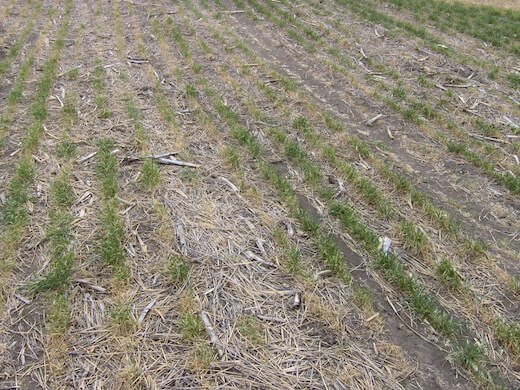Tyree Ag salesmen have spotted brown wheat mites in fields in south central Kansas and north west Oklahoma. Brown wheat mite (BWM) is a pest of wheat and barley of particular concern during drought and dry weather and high temperatures. BWM damages wheat plants by destroying plant cells as it feeds, causing a stippling of the leaves. They have a tendency to feed on the tips of the leaves, causing them to dry out and die. Heavily infested fields present a scorched, withered appearance (yellowed appearance that looks like drought stress). The mite also transmits barley yellow streak mosaic virus, a pathogen.
What do they look like?
These mites are tiny, spider-like creatures that are about 0.025 inches in length - about as big as the period at the end of a sentence. Mites are oval and color varies from metallic brown to black and dark red-brown bodies and lighter red-orange or pale yellow legs. The front legs are about twice as long as the other three pairs of legs.


Life Cycle
BWM can complete a life cycle in as little as 10-14 days. They will produce up to 3 generations each year, laying eggs at different times of the year. The eggs attach to soil particles near the base of the wheat plant. BWM feed in the daytime, with activity on the plants reaching a peak about mid-afternoon. At night, they crawl down into the soil and are able to survive in cold temperatures without any problems. Because male mites have not been found, it is believed that the brown wheat mite can reproduce parthenogenetically - that is, without mating.
Damage
Generally, the pest is most common on continuous wheat or where volunteer wheat was allowed to grow on summer fallow ground, however with the recent drought and warm temperatures, we are seeing it in all wheat fields. The mites are carried by the wind and can spread easily. BWM moves from the soil to the plant to feed, producing a fine stippling that causes leaves to take on a water-stressed appearance, turning first dusty gray and then yellow. Infested wheat plants appear scorched or bronzed and withered, which can easily be confused with drought symptoms. BWM are very susceptible to hard, driving rains, but until then they can cause yield loss when present in large numbers.

Management
Mites are difficult to monitor because of their small size, lack of webbing, and habit of dropping from the plant to the soil when disturbed. Although small, they can be seen by the naked eye. Accurate counting can be aided by tapping plants over white paper and counting the dislodged mites. The economic threshold is not well defined, but it is estimated to be at least several hundred mites per foot of row in early spring. Moist conditions are unfavorable for BWM populations. Rainfall or irrigation will cause a dramatic reduction in mite numbers. Management of volunteer wheat is an important preventive measure. Once an outbreak occurs, chemical control is the only effective management option.
Contact Tyree Ag today if you fear you have brown wheat mites in your fields or if you need to schedule crop protection product applications. Toll Free: 866-897-3324.
Information taken from Montana State University, Oklahoma State University, and Kansas State University.
KP
